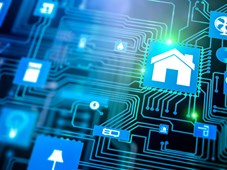How Switches Help Support Energy Efficiency in Modern Lighting Applications
By Mike Bolduc | March 13, 2017

From carbon emission mandates to green building certification, the global movement towards energy efficient buildings has been visible for quite some time. Rating systems such as LEED, Energy Star, and Green Globes in North America and BREEAM, HQE, and DGNB in Europe are growing in popularity. Sustainable design, zero-net energy (ZNE), and Eco-friendly are the modern buzz words used throughout the building industry. But what does all this mean in terms of the hardware used to monitor and control energy usage in modern buildings? This blog will examine some of the common energy saving lighting applications used in commercial buildings and describe attributes of the electro-mechanical switches which allow these products to function.
With lighting representing 19% of global electricity consumption and 23% of electricity consumption in the US, it’s no wonder that building owners look for ways to use it more efficiently. According to the US Green Building Council (USGBC), one of the simplest ways to reduce a building’s carbon footprint is to retrofit lighting.
For improved lighting efficiency, one of the most common products is the occupancy, or motion sensor. These products can be mounted in a corner of the room, be part of a wall light switch, or be mounted on the ceiling in the case of high bay sensors used in warehouses. The device typically incorporates a passive infrared (PIR) sensor to determine movement. Many of these sensors require the use of a DIP switch to adjust sensitivity and timing settings. The DIP switches are generally required to have low profile miniature footprints and have a contact system which can resist corrosion and provide reliable switching at low current levels.
Using daylight sensors combined with automated shade or shutter controls can help reduce electricity consumption by turning off or dimming the lights when enough ambient outdoor light is available. The controllers used to program or manually actuate the shades often use tact switches for the user interface. The haptic properties and long term reliability of the tact switches selected can have a big impact on the quality perception of the end product.
Various wall switches are used for lighting efficiency in green buildings and can include dimmers and programmable timers. These devices can be hard wired to the building or be managed wirelessly by a remote controller. For wireless switches, there is often a need to use standard or rotary coded DIP switches for addressing. Tact switches are also commonly used under the buttons to actuate or program the wall unit. These tact switches need to perform reliably over many years of repeated cycling and also have the appropriate haptics (or sound and feel) to impart an image of quality to the end product.
Finally, in large buildings, all these devices are typically managed by a building control system. These controllers are commonly referred to by their communication protocol such as DALI or KNX. Most of these devices employ some type of tact or pushbutton switch for setup, programming, and manual zone control. The tact switches need to have appropriate haptics to facilitate interaction with the technician as well as be able to withstand dirty or dusty environments.
In summary, the trend towards energy efficient buildings continues to increase on a global basis. With lighting retrofits being a simple way to save energy and cost, it makes sense for building owners to invest in the devices described above. It’s also important to point out however, that the simple tact, pushbutton, and DIP switches – often the lowest cost products on the end device – can have a significant impact on the perception of quality by the end customer.

Mike Bolduc
Global Segment Manager
Industrial & Medical
